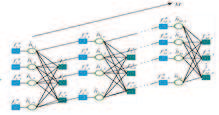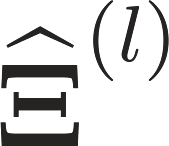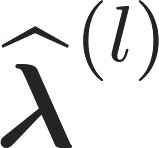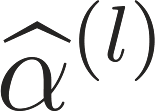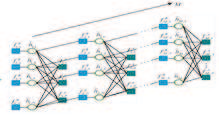This paper proposes a Bayesian downlink channel estimation algorithm for time-varying massive MIMO networks. In particular, the quantization effects at the receiver are considered. In order to fully exploit the sparsity and time correlations of channels, we formulate the time-varying massive MIMO channel as the simultaneously sparse signal model. Then, we propose a sparse Bayesian learning (SBL) framework to learn the model parameters of the sparse virtual channel. To reduce complexity, we employ the expectation maximization (EM) algorithm to achieve the approximated solution. Specifically, the factor graph and the general approximate message passing (GAMP) algorithms are used to compute the desired posterior statistics in the expectation step, so that high-dimensional integrals over the marginal distributions can be avoided. The non-zero supporting vector of a virtual channel is then obtained from channel statistics by a k-means clustering algorithm. After that, the reduced dimensional GAMP based scheme is applied to make the full use of the channel temporal correlation so as to enhance the virtual channel tracking accuracy. Finally, we demonstrate the efficacy of the proposed schemes through simulations.
翻译:本文为时间变化的大型 MIMO 网络提出了一个巴伊西亚下链路估计算法。 特别是, 考虑接收器的量化效应。 为了充分利用频道的广度和时间相关性, 我们将时间变化的大型MIMO 频道设计成同时稀疏的信号模型。 然后, 我们提出一个稀疏的巴伊西亚学习框架来学习稀疏虚拟频道的模型参数。 为了降低复杂性, 我们使用预期最大化算法来实现大致的解决方案。 具体地说, 使用系数图和一般传递信息( GAMP) 算法来计算预期步骤中的预期的远地点统计数据, 以避免边际分布的高维构件。 然后, 虚拟频道的非零支持矢量通过 k- 角度的组合算法从频道统计数据中获取。 之后, 基于降低的 维 GAM 计划被用于充分利用频道的时间相关性, 从而增强虚拟频道的跟踪精度。 最后, 我们通过模拟来展示所拟议的计划的效果 。

